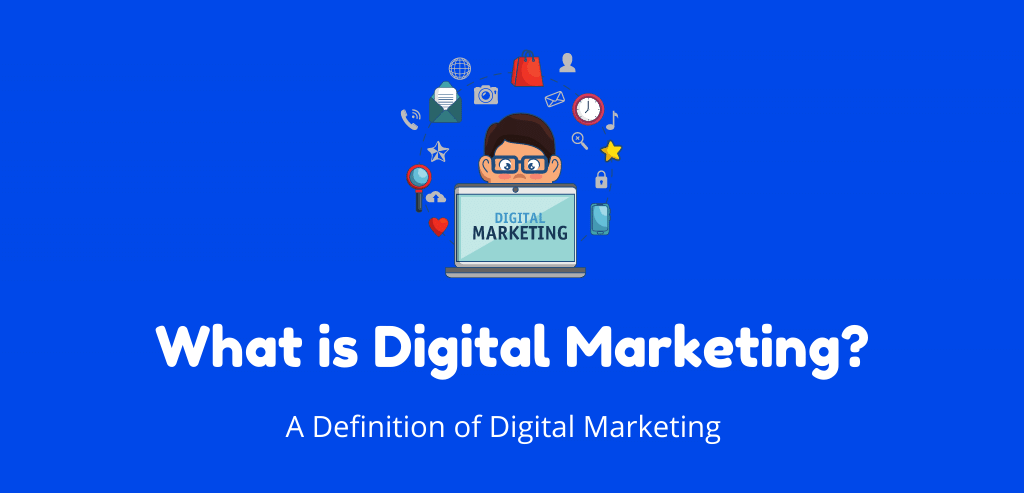
Want to grow your business in a crowded marketplace? Search engine marketing (SEM) is one of the best ways to do it.
Millions of companies are competing for the same customers online, so it’s more important than ever to advertise in the right places. SEM is the most effective way to do this, because it allows you to target your ads to people who are already interested in what you have to offer.
Here’s a simple example: let’s say you sell shoes. If you set up an SEM campaign, you can target your ads to people who are searching for terms like “buy shoes online” or “best running shoes for women.” This means that your ads are only seen by people who are already interested in buying shoes, which makes them more likely to click and convert.
SEM is a complex topic, but the basic idea is simple: you pay search engines like Google and Bing to display your ads at the top of the search results page (SERP) for certain keywords. When someone clicks on your ad, you pay a small fee to the search engine.
Why Is Search Engine Marketing Important?

With increasing consumers searching for and purchasing products online, search engine marketing has become a crucial online marketing strategy to increase your reach.
The majority of new visitors to a website find it by doing a query on a search engine.
Advertisers only pay for impressions that lead to visitors in search engine marketing. That makes it an efficient way for a company to spend its marketing dollars. As a bonus, each visitor gradually improves the website’s rankings in organic search results.
Because consumers enter searches to find information of a commercial nature. They are in a great mood to purchase compared to other sites such as social media, where users are not explicitly looking for something.
Search engine marketing reaches consumers at precisely the right time: when they are open to new information. Moreover, unlike most digital marketing, PPC advertising is not intrusive and does not interrupt its tasks.
The results are immediately visible with SEM. It is arguably the fastest way to get traffic to a website.
How Search Engine Marketing Works?

Search engines use sophisticated algorithms to ensure that each search returns the most relevant results, including location and other available information.
Sponsored ads are displayed on top and next to search engine search results pages for more visibility and awareness than the organic results in paid search advertising.
For example, suppose you are a customer looking for a product or service online. You go to a search engine and type in your search terms (also known as keywords).
You will come across various business ads whose keywords match your search results page’s search keywords.
These ads appear in prominent positions on the page and the other search lists that match your keywords. The paid listings are highly relevant to your specific search, so you will likely click on them.
Now let’s look at how SEM campaigns work from the marketer’s perspective.
SEM networks are self-service operations. Once a marketer has chosen a network, they can start a campaign in no time.
When setting up a campaign on a search engine marketing network, the marketer is asked to:
- Do keyword research and choose a series of keywords related to the website or product.
- Select a geographic location for the ad where you want the ad to appear.
- Create a text-based ad that will appear in search results.
- Bid on a price they are willing to pay for each click of their ad.
Plain text ads are easy to create. Marketers enter a headline, ad body text, call-to-action, and a URL for the hyperlink.
Search engine marketing is considered by many to be the most efficient way to spend marketing dollars.
Search Engine Marketing Platforms

An SEM platform is a search engine that allows a brand to display search ads when users search. The most common SEM platforms are Google and Bing.
Google Ads is the most widely used SEM platform. Billions of Google searches are performed every day so you can present yourself to the largest online audience.
Bing Ads claims to be connected to 3 million searchers that Google can’t reach. In addition, by serving ads on partner sites like Yahoo and MSN, Bing Ads allows you to connect with searchers who don’t use Google solely to search.
Types of Search Engine Marketing Keywords

SEM keywords are the terms and phrases you target in your search engine marketing campaigns. When people search for these keywords, they’ll see your ads. For example, if your campaign targets the term “virtual assistant,” your ad might appear when someone searches for that phrase.
When setting up an SEM campaign, choose the keywords you want to target and avoid. There are four types of keywords that you can use in your SEM campaigns.
Broad match keywords:
Target variations of a term. It includes similar phrases, singular or plural forms, misspellings, stemming, or synonyms of the target term. For example, if you target the virtual assistant for broad match keywords, a campaign can also target virtual assistants, online assistants, and virtual teams.
Phrase match keywords:
Aim for the exact phrase and any phrases with words before or after the target keyword. For example, if you target the virtual assistant for the keyword “Phrase Match,” a campaign can also target the best, find a virtual assistant, and hire a virtual assistant.
Exact match keywords:
Target words that are very closely related to the target term. It includes misspellings, singular or plural forms, stemming, abbreviations, rearranged words, paraphrases, or closely related words with the same search intent of the exact match term.
For example, a campaign can also target virtual assistants if you target the virtual assistant for the exact match keyword.
Negative keywords:
Exclude terms that you don’t want to target. Negative keywords are variations of broad match, phrase match, and exact match keywords that you don’t want to use in your campaign. These terms may semantically link to your keywords but not to the search intent of the target term, your drive, or your ad copy.
Examples of negative keywords for the target term virtual assistant can be the salary of a virtual assistant or the training of a virtual assistant. If the ad aims to hire a virtual assistant, the intent of these terms would be irrelevant. Therefore, they should exclude from the campaign.
Search Engine Marketing Targeting

Keyword targeting tells a search platform when to run your ads. However, SEM targeting goes one step further. You set additional parameters for when your ad should appear and who it should target.
Location Targeting: Choose to show ads only to people within a specific zip code or geographic area.
Ad schedule targeting: Choose to show ads only at certain times or on certain days of the week.
Demographic Targeting: Set ads to only show people who fit specific demographic categories based on age and gender.
Device targeting: Specifies that ads only show users on specific devices, such as mobile phones, desktops, or tablets.
Search Engine Marketing Account Structure

The account structure is the way your SEM campaigns organize and set up. This google chart shows the hierarchy of how the account structure works.
Campaigns: As the highest level within an account, each campaign has its own goal, budget, bid strategy, and targeting settings. Campaigns usually organize tabs into more important topics related to a specific product, service, audience type, or promotion. For example, a platform that compares virtual assistants to customers may have two campaigns, one for people looking for virtual assistants and one for people who are virtual assistants.
Ad Groups: Within a campaign, ad groups break the movement into more specific topics. Most drives have a few different ad groups. We recommend that you don’t exceed seven to 10 ad groups per campaign. For example, the virtual assistant campaign might have two ad groups: part-time virtual assistants and a full-time virtual assistant.
Keywords and Ads: Each ad group has its target keywords and ads. The keywords and ad copy target the unique audience and theme of the ad group. We recommend showing two to three ads and no more than 20 keywords per ad group. For example, the ad group that targets full-time virtual assistants can create ads and use keywords that speak directly to virtual assistants looking for full-time work. In contrast, the part-time virtual assistant ad group would target keywords and use the language for a part-time job.
Search Engine Marketing Ad Copy

For the most part, SEM ad copy mimics organic search results. You also have options for viewing additional information. A standard ad usually includes two headings, a description, and a website URL. You can also add:
- Sitelink extensions
- Callout extensions
- Call extensions
- Message extensions
- Location extensions
- Advertiser ratings
- Price extensions
- Structured snippet extensions
SEM platforms may also offer additional search ad formats such as product carousels.
The Search Engine Marketing Ad Auction

Setting up an SEM campaign doesn’t mean your ad will show every time someone searches for your target keyword. Instead, SEM platforms have a built-in system that decides if and when your ad will offer and how it will compete with other brands targeting the exact keywords. This system is an ad auction and is based on three factors.
MAX. CPC Bid: The maximum amount you are willing to pay when someone clicks your ad.
Quality Score: A rating that the platform assigns to your ad. There is no exact formula for the Quality Score. However, it’s believed to be based on your click-through rate (CTR), how relevant keywords are to the ad group, how relevant the landing page is to keywords, and historical ad performance.
Ad Rank: The higher your Ad Rank, the better chance people will see and click on your search ads!
These three factors determine who will “win” the ad auction and get the best ranking on search engine results pages.
Max CPC Bid x Quality Score = Ad Rank
The main takeaway from this formula is that brands with a high-Quality Score can outperform brands with a higher maximum CPC bid. Thus, if your Quality Score in SEM is high, you can get a better position on SERPS while spending less.
How to Improve Search Engine Marketing Results?

Creating effective SEM campaigns requires research and strategy before setting up your campaign and after your campaign is up and running.
The following tactics can help you optimize your campaigns to reach more people, maximize your budget, and get more conversions.
Perform Keyword Research
One of the biggest keys to SEM success is choosing the best keywords for targeting. So do keyword research and find terms that:
Used by your audience: Sort the results by keyword popularity to identify the top phrases your audience is looking for regularly. Then, use Alexa’s Keyword Difficulty Tool to find the most popular terms for your business and industry.
Work at the bottom of your sales funnels: Identify high converting purchase keywords that target prospects at the bottom of the purchase funnel. Use the Buyer Keyword Filter in Alexa’s Competitor Keyword Matrix to identify high-intent search terms that are already driving traffic to your competitors but not you.
Fit into your budget: consider the ROI you expect from your campaigns and choose keywords with a cost-per-click that translates into a positive ROI.
Create Compelling Ads
For an SEM campaign to be effective, searchers must force to click on the ad. Therefore, when creating your ads, use the following tips to get more people to click on your search results.
- Use the keyword in the ad copy.
- Communicate to the reader the benefit or solution that you offer.
- Associate your copy with search intent.
- Include prices and special offers, if applicable.
- Include a clear call to action.
- Use ad extensions.
Improve Your Quality Score
Having a high-Quality Score will help your SEM ads show more often and at a lower cost. Work on improving your Quality Score by including target keywords in your ad copy and the landing page it leads to. That is how SEM platforms learn that the Ad and Destination URLs match the searcher’s intent, resulting in a higher Quality Score.
Optimize Existing Campaigns
If you want to get the most out of your SEM strategy, you also need to learn how to improve SEM campaigns after they start.
For the best results, keep tweaking your campaigns once they’re running.
Add additional relevant keywords: You may have missed keywords when you first created your campaign. Review the campaigns and add suggested keywords that may be missing.
Set Negative Keywords: Review your campaign and remove keywords attracting the wrong type of traffic. Set underperforming or irrelevant terms as negative keywords.
Use A/B testing: One advantage of SEM is that it gives you quicker feedback on working. Use A / B testing to create different variations of your ad strategies. Check what’s working and tweak your campaigns to find the best performing combination of targeting, ad copy, keywords, and landing pages.
Now that you can safely answer, “What is SEM?” Start planning and executing your SEM plan. First, use the tools mentioned in this post to find the best keywords for your campaigns.
Conclusion
Ultimately, search engine marketing is a clever way to increase your company’s visibility and brand awareness, business, or website.
You need to understand your website’s customers and potential visitors before developing a solid SEM strategy.
You can understand the relevant keywords essential for search engine marketing to work.
Search engine marketing or SEM offers excellent potential to help companies achieve their goals quickly and be scalable. Therefore, it is ideal to have experts who have extensive experience positioning brands on Google.






